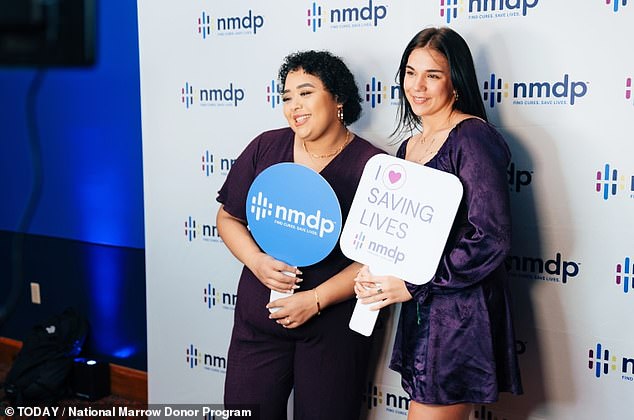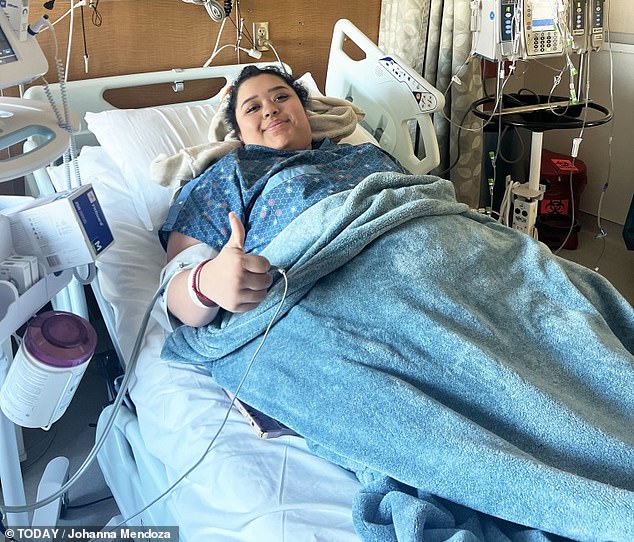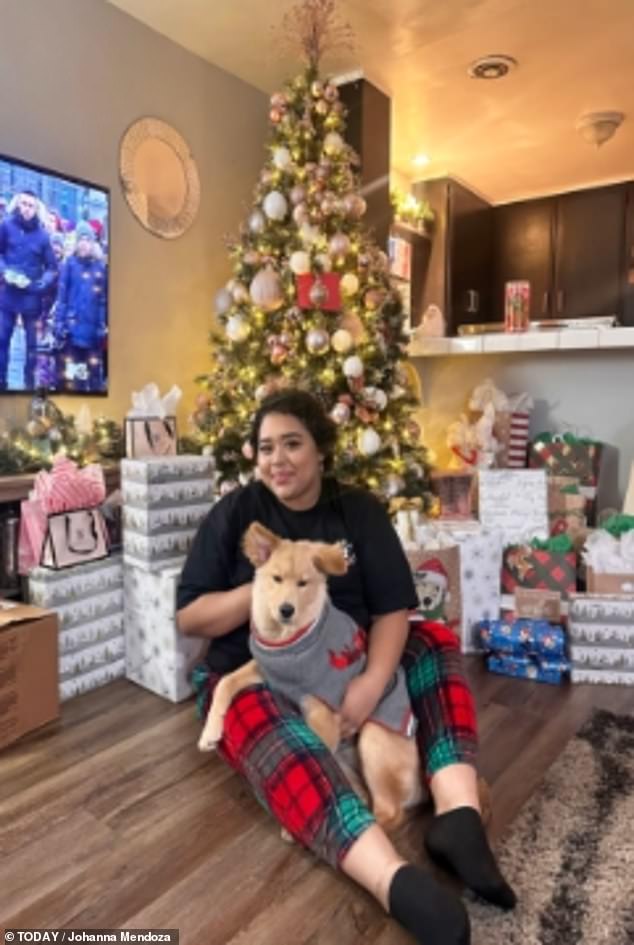A 22-year-old woman’s holiday in Mexico turned into a fight for survival after she noticed red spots on her wrists.
Johanna Mendoza wasn’t worried when she first saw the spots on her body, thinking it was caused by an allergic reaction to something she ate.
But when it spread to the rest of her body, she was rushed to hospital, where 24 hours later she was diagnosed with a rare form of cancer called acute lymphoblastic leukemia (ALL).
ALL is a progressive cancer of the blood and bone marrow and accounts for less than one in 200 of all cancers diagnosed in the United States

Johanna Mendoza (left) found out she had acute lymphoblastic leukemia (ALL) after she developed red spots on her hands while on vacation


ALL affects less than 0.5 percent of all people diagnosed with cancer in the United States
The majority of ALL cases occur in children, but most deaths—about four out of five—occur in adults.
Symptoms of ALL may include fatigue, weakness, dizziness, lightheadedness, bruising or red spots, and recurrent infections.
When Mendoza found out she had ALL, her overnight stay in the hospital turned into a two-month stay as doctors worked to bring her platelet count up through several blood transfusions.
The spots appeared on Mendoza’s body because the leukemia causes blood vessels to break and bleed under the skin.
Platelets are blood cells developed in the bone marrow to form blood clots to stop or prevent bleeding, and without them blood vessels cannot heal.
When Mendoza’s platelet count was high enough, she was sent home and told she would have to undergo chemotherapy and a bone marrow transplant.
For two months, Mendoza underwent round-the-clock chemotherapy and was put on a bone marrow transplant list after her twin sister and brother were both deemed not to be a viable match, but said she was surprised how long it took to find a match .
“We actually found one really quickly, which was shocking,” Mendoza told NBC5, adding, “I thought it was going to be a longer process.”


Johanna Mendoza was able to go home on Christmas Eve, and at 25 she is now cancer-free
A bone marrow transplant, also called a stem cell transplant, is an important adjunct to chemotherapy because aggressive rounds of chemo can severely damage the bone marrow, which is needed to make new, healthy blood cells, according to American Cancer Society.
However, finding a donor can be a difficult and lengthy process, with only 30 percent of patients having a family member who can be a donor, with some people waiting years to find a match.
The person’s ethnic background plays a role in how quickly a match is made, from blacks having only a 29 percent chance of finding a match to whites having an 80 percent chance.
Meanwhile, Asian or Hispanic people, like Mendoza, fall in the middle with just under a 50 percent chance of finding a match from a donor list.
“There is a large gap in the probability of finding what we historically would have considered a perfectly matched donor,” said Dr. Steven Devine, Chief Medical Officer at the National Marrow Donor Program. Today.com.
There is now the possibility of getting a donor who is almost an exact match to bridge the gap for people who cannot access a perfect match transplant.
If a bone marrow transplant is not a perfect match, the patient may develop graft-versus-host disease (GVHD), which is caused by the immune system attacking the donated stem cells.
Mendoza’s transplant donor had to match his human leukocyte antigen – a protein found on most cells in the body – by exactly half.
After the transplant, Mendoza became part of the clinical trial of a post-transplant drug cyclophosphamide.
Doctors are looking at whether taking the drug in the third and fourth days after receiving a transplant will prevent GVHD by preventing the immune system from reacting to the donor’s T cells and thereby rejecting the transplant.
After the operation, Mendoza had to stay in isolation for two to three weeks to avoid infection, but on Christmas Eve she got the message that she could go home.
Mendoza had a biopsy 100 days after his transplant and is now 25 years old and cancer-free.
“Life throws you a curveball, but just because it throws it at you doesn’t mean you have to give up,” Mendoza told TODAY.
‘Go ahead and keep crushing it.’

